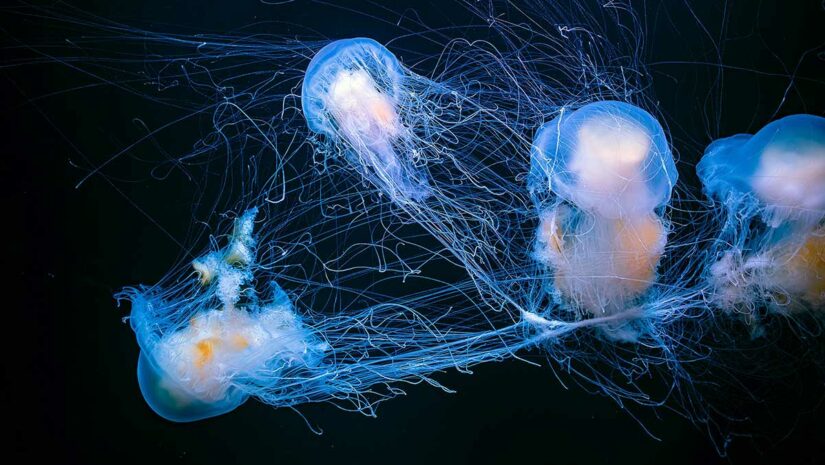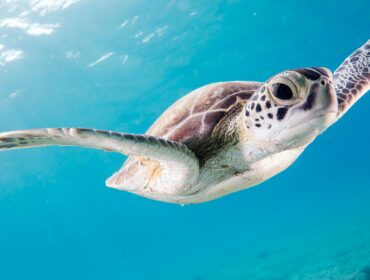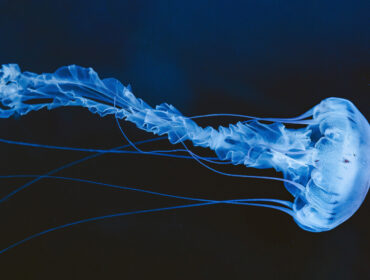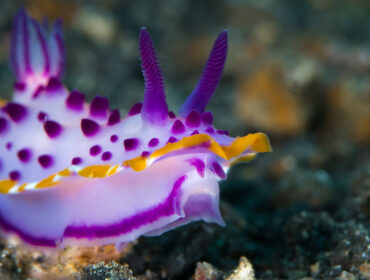Jellyfish are some of the ocean’s most ethereal creatures, making their way across vast expanses without so much as a brain or nervous system to guide their path. But often their path leads them to the shallows, where lapping waves eventually cast them ashore to the delight — and sometimes horror — of beachgoers worldwide. Here are just five common jellyfish types found on Florida beaches.
Types of Jellyfish in Florida
Moon Jellyfish
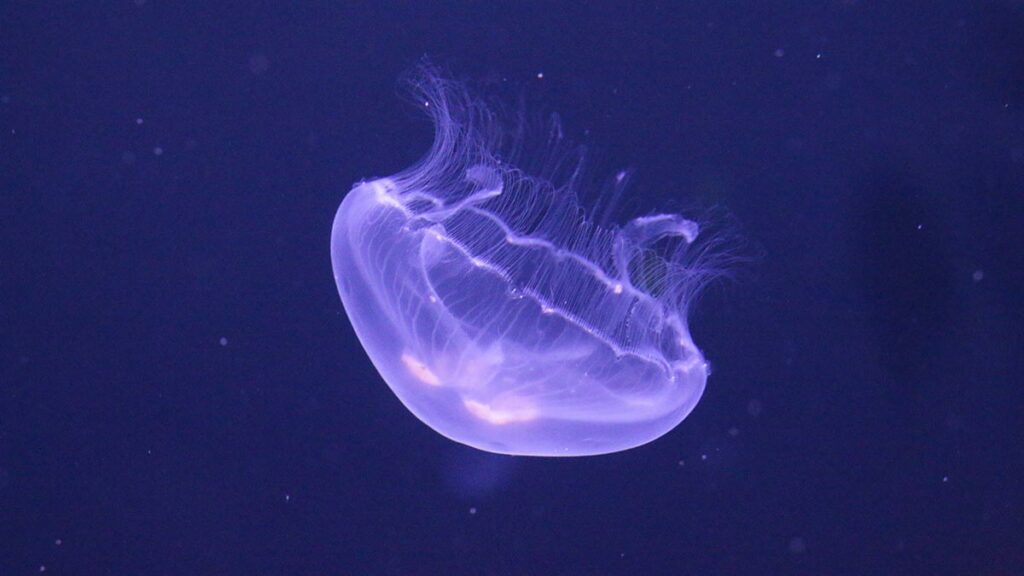
Moon jellyfish (Aurelia aurita) live in nearly all the world’s oceans, primarily in inshore regions like harbors and estuaries. Because its locomotion is rather limited, this species prefers temperate waters with regular currents that can help push it through the water column. The moon jelly feeds on plankton using the tentacles flowing from the bell, and is not harmful to humans.
Portuguese Man o’ War
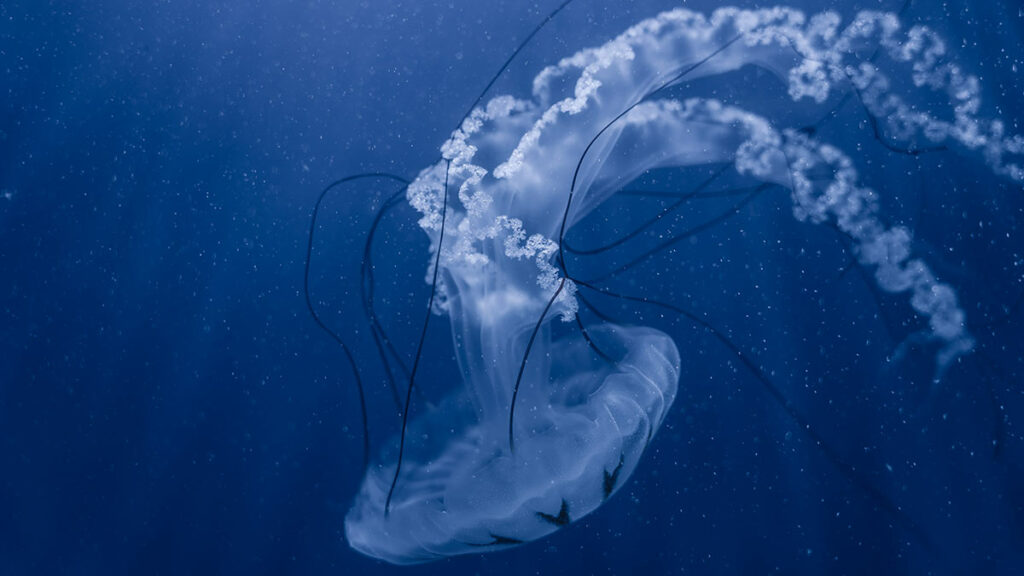
The Portuguese man o’ war (Physalia physalis) is a common jellyfish found on Florida beaches, but it’s not actually a true jellyfish. True jellyfish are single multicellular organisms, where as Portuguese man o’ wars are comprised of colonies of specialized individual animals, similar to corals. This species is a surface dweller, relying on currents, tides, and wind to catch its inflated “sail” and take it toward food sources, which is how it often ends up on the beach. Its tentacles, which can stretch from 10-30 meters in length, are loaded with venom-filled nematocysts that will deliver a painful sting at the very least if touched by human flesh. These nematocysts remain active even when the animal is dead, so never touch a Portuguese man o’ war on the beach!
Atlantic Sea Nettle
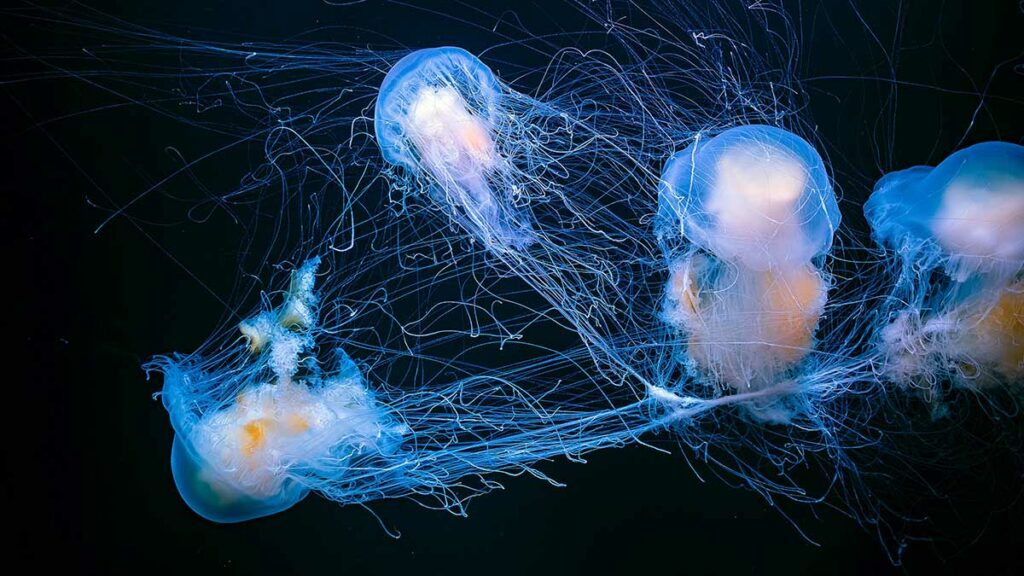
The Atlantic sea nettle (Chrysaora quinquecirrha), as its name suggests, lives primarily in the tropical and subtropical regions of the Atlantic Ocean, as well as parts of the Indo-Pacific. A slightly larger jellyfish species, the sea nettle feeds not only on plankton, but also comb jellies (not true jellies), crustaceans, minnows, eggs, worms, mosquito larvae, and other species of jellyfish. Prey are subdued through the use of thousands of microscopic venom-filled cnidocytes on each of the sea nettle’s trailing tentacles, which can cause a painful rash in humans if triggered.
Cannonball Jellyfish
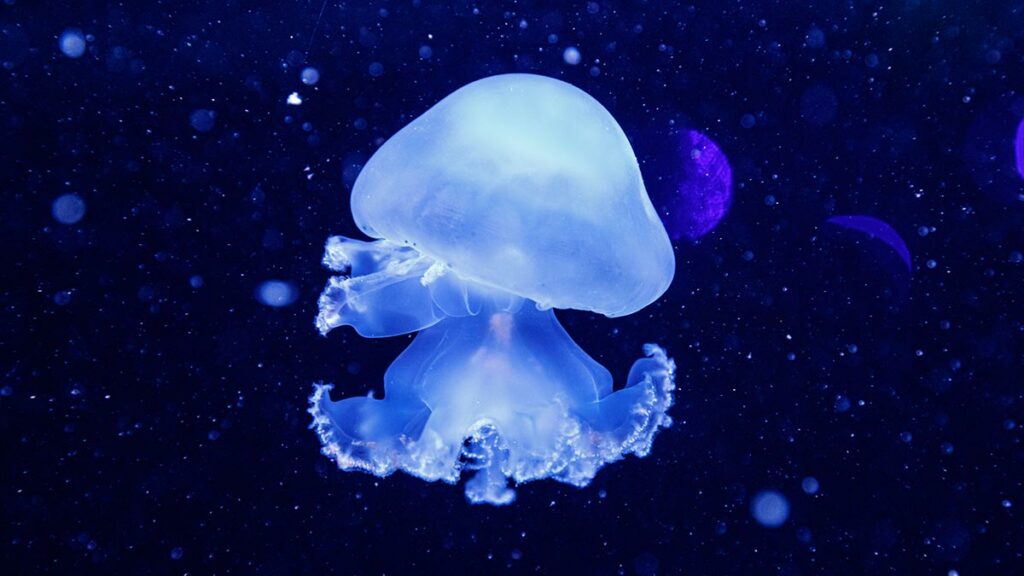
Another innocuous jellyfish found on Florida beaches, the cannonball jellyfish (Stomolophus meleagris) poses little threat to humans but can deliver a stunning blow to nearby prey and predators. When disturbed, its nematocysts release a toxin that can harm smaller fish in the near vicinity and deter most predators. Unfortunately for the cannonball jellyfish, it is a primary prey species for the leatherback sea turtle, who doesn’t seem to be affected by this defense mechanism.
By-the-Wind Sailor
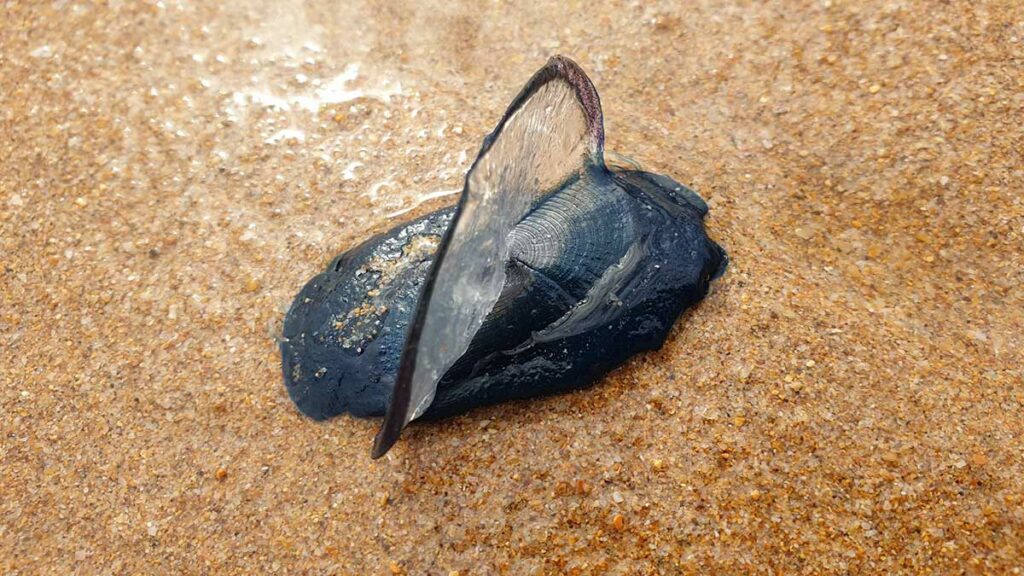
The by-the-wind sailor (Velella velella) is another jellyfish found on Florida beaches that is not a true jellyfish, but a colonial species, like the Portuguese man o’ war. In fact, the by-the-wind sailor operates in exactly the same way the man o’ war does, using currents, tides, and wind to traverse the open sea, with tentacles trailing below to ensnare and envenomate prey. While the toxins in its nematocysts are not generally harmful to humans, irritation of the skin and eyes can occur if contacted with the venom.

